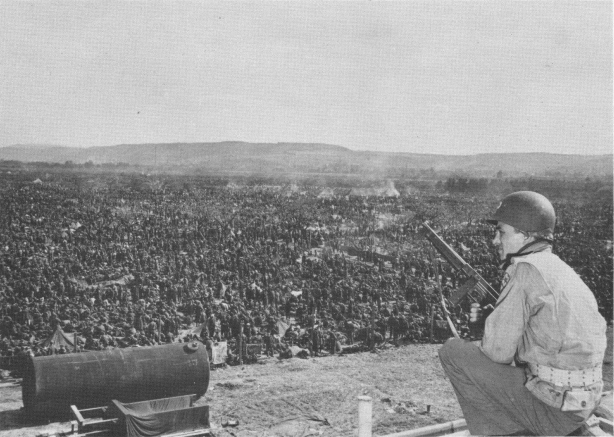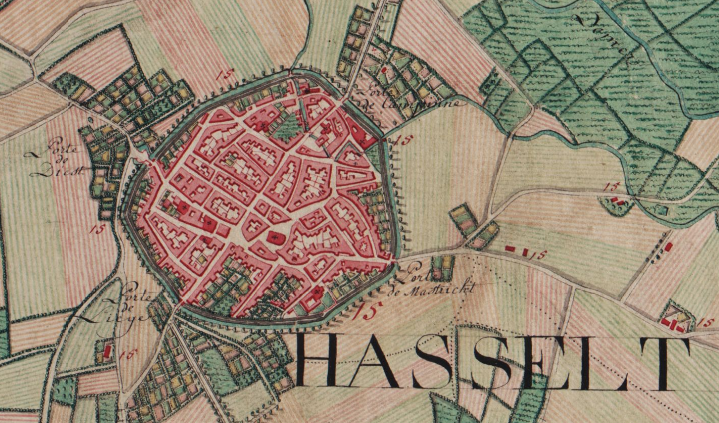|
Jan Swerts
Jan Swerts (25 December 1820, Antwerp - 11 August 1879, Marienbad) was a Belgium, Belgian painter of historical subjects and portraits who worked on many publicly funded commissions. He played a major role in introducing German Romanticism, Romantic historical painting into Belgium. His fresco's using oil paint heralded a revival of a colouristic style derived from Peter Paul Rubens, Rubens and the Flemish Baroque painting, Flemish Baroque combined with historical and psychological realism. Life Training Jan Swerts was a student of the leading Antwerp history painter Nicaise De Keyser at the Royal Academy of Fine Arts (Antwerp), Antwerp Academy of Fine Arts.Biographical details at the Netherlands Institute for Art History Here he met Godfried Guffens, another pupil of De Keyser, who became a close friend. The two friends visited P ... [...More Info...] [...Related Items...] OR: [Wikipedia] [Google] [Baidu] |
Remagen
Remagen ( ) is a town in Germany in the state of Rhineland-Palatinate, in the district of Ahrweiler. It is about a one-hour drive from Cologne, just south of Bonn, the former West German capital. It is situated on the left (western) bank of the river Rhine. There is a ferry across the Rhine from Remagen every 10–15 minutes in the summer. Remagen has many notable and well-maintained buildings, churches, castles and monuments. It also has a sizeable pedestrian zone with plenty of shops. Overlooking the west bank of the Rhine just north of the city centre is the Apollinariskirche. It has an observation deck that is only open to parishioners on Sundays. Pedestrians reach the church via a dirt trail that passes a series of roadside monuments representing each of the fourteen Stations of the Cross. The church grounds contain an outdoor crypt and an abbey. Further down the river is one of the many castles along the Rhine, perched even higher than the Apollinariskirche. History The R ... [...More Info...] [...Related Items...] OR: [Wikipedia] [Google] [Baidu] |
Lanaken
Lanaken (; li, Laoneke) is a municipality located in the Belgian province of Limburg. On January 1, 2007, the municipality of Lanaken had a total population of 24,724. Its area is 59.00 km² which gives a population density of 415 inhabitants per km². Lanaken is located on the Belgian-Dutch border, bordering Maastricht directly. In the 2006 census, some 20 percent of the inhabitants turned out to have the Dutch nationality. A number of neighbourhoods in Lanaken is characterized by these immigrants' numerous villas and exclusive landhouses. Lanaken consists of the following villages: Lanaken proper, Rekem, Neerharen, Gellik, Veldwezelt, Smeermaas and Kesselt. Also located in Lanaken are the hamlets Briegden and Herbricht and the old village centre Oud-Rekem. The South African pulp and paper company Sappi operates a large mill on the outskirts of the town. In 2006, four 100 meter high wind turbines were built to provide electricity to the Celanese factory. Later on 8 ... [...More Info...] [...Related Items...] OR: [Wikipedia] [Google] [Baidu] |
Hasselt
Hasselt (, , ; la, Hasseletum, Hasselatum) is a Belgian city and municipality, and capital and largest city of the province of Limburg in the Flemish Region of Belgium. It is known for its former branding as "the city of taste", as well as its local distelleries of Hasselt jenever (gin), the Hasselt Jenever Festivities, Limburgish pie and the Hasselt speculaas. The municipality includes the original city of Hasselt, plus the boroughs of Sint-Lambrechts-Herk, Wimmertingen, Kermt, Spalbeek, Kuringen, Stokrooie, Stevoort and Runkst, as well as the hamlets and parishes of Kiewit, Godsheide and Rapertingen. On 01 July 2022 Hasselt had a total population of 80,260 (39,288 men and 40,972 women). Both the Demer river and the Albert Canal run through the municipality. Hasselt is located in between the Campine region, north of the Demer river, and the Hesbaye region, to the south. On a larger scale, it is also situated in the Meuse-Rhine Euroregion. History Hasselt was founded in a ... [...More Info...] [...Related Items...] OR: [Wikipedia] [Google] [Baidu] |
Jan Swerts - Priest Giving A Child Her First Lesson
Jan, JaN or JAN may refer to: Acronyms * Jackson, Mississippi (Amtrak station), US, Amtrak station code JAN * Jackson-Evers International Airport, Mississippi, US, IATA code * Jabhat al-Nusra (JaN), a Syrian militant group * Japanese Article Number, a barcode standard compatible with EAN * Japanese Accepted Name, a Japanese nonproprietary drug name * Job Accommodation Network, US, for people with disabilities * ''Joint Army-Navy'', US standards for electronic color codes, etc. * ''Journal of Advanced Nursing'' Personal name * Jan (name), male variant of ''John'', female shortened form of ''Janet'' and ''Janice'' * Jan (Persian name), Persian word meaning 'life', 'soul', 'dear'; also used as a name * Ran (surname), romanized from Mandarin as Jan in Wade–Giles * Ján, Slovak name Other uses * January, as an abbreviation for the first month of the year in the Gregorian calendar * Jan (cards), a term in some card games when a player loses without taking any tricks or scoring a mini ... [...More Info...] [...Related Items...] OR: [Wikipedia] [Google] [Baidu] |
Florentinus Claes
Florentinus was a Roman politician who served as Urban prefect of Rome from 395 to 397 AD. Career A native of Augusta Treverorum, Florentinus was possibly a Notarius around 379/380 AD. He was the Comes sacrarum largitionum in the west from 385 to 386 and the Quaestor sacri palatii in 395. After this he was given the post of Praefectus urbi of Rome, serving from 395 to the end of 397 AD before he was replaced by Lampadius. During his time as Urban Prefect, Florentinus received numerous missives from the emperor Honorius concerning the duties, restrictions and rewards for the decurions. He was also reprimanded by the emperor for issuing post warrants without imperial authorisation.Pharr, pg. 203 Soon after his term as Urban Prefect had ended he entered into retirement, living in Gaul. During his time in office, he received regular correspondence from Quintus Aurelius Symmachus, while Claudian Claudius Claudianus, known in English as Claudian (; c. 370 – c. 404 AD), was a La ... [...More Info...] [...Related Items...] OR: [Wikipedia] [Google] [Baidu] |
Otto Schwerdgeburth
Otto Schwerdgeburth (5 March 1835, Weimar - 22 December 1866, Weimar) was a German painter and engraver who mainly painted historical subjects. Life Schwerdgeburth was born from the second marriage of Carl August Schwerdgeburth, a well-known engraver and painter. He was first a pupil of his father and later studied under Friedrich Preller. He then travelled to Belgium where from 1856 to 1860 he studied at the Antwerp Academy of Fine Arts.Franz Vallentin: Schwerdtgeburth: Otto (Karl Friedrich Julius) In: Allgemeine Deutsche Biographie (ADB). Band 54, Duncker & Humblot, Leipzig 1908, p. 286 The Antwerp Academy played an important role in the Belgian historical painting movement. Schwerdgeburth became acquainted with leading artists of this school of painting such as |
Sint-Niklaas
Sint-Niklaas (; french: Saint-Nicolas, ) is a Belgian city and municipality located in the Flemish province of East Flanders. The municipality comprises the city of Sint-Niklaas proper and the towns of Belsele, Nieuwkerken-Waas, and . Sint-Niklaas is the capital and major city of the Waasland region straddling the East Flanders and Antwerp provinces. The city is known for having the largest market square in Belgium. At one point this square also boasted the largest Christmas tree, and the largest easter egg in Europe. History Thirteenth-century origins Although some traces of pre-Roman activity have been found on the territory of Sint-Niklaas, the regional centre during Roman times was neighbouring Waasmunster, better located on the river Durme. Belsele was already mentioned in a 9th-century document. The history of Sint-Niklaas proper, however, starts in 1217, when the bishop of Tournai, following advice from the local clergy, founded a church dedicated to Saint Nicholas he ... [...More Info...] [...Related Items...] OR: [Wikipedia] [Google] [Baidu] |
Biographie Nationale De Belgique
The ''Biographie nationale de Belgique'' ( French; "National Biography of Belgium") is a biographical dictionary of Belgium. It was published by the Royal Academy of Belgium in 44 volumes between 1866 and 1986. A continuation series, entitled the ''Nouvelle Biographie Nationale'' ("New National Biography"), has been published by the Royal Academy of Science, Letters and Fine Arts of Belgium since 1988. Both the ''Biographie nationale'' and ''Nouvelle biographie nationale'' were digitised by the Fonds InBev-Baillet Latour and can be freely consulted at the Academy's website. A parallel biographical dictionary has been produced in Dutch since 1964, entitled the ''Nationaal Biografisch Woordenboek'' ("National Biographical Dictionary"). It places more emphasis on figures important to the history and culture of Flanders and is published by the Royal Flemish Academy of Belgium for Science and the Arts (with the co-operation of the Royal Academy of Dutch language and literature and the R ... [...More Info...] [...Related Items...] OR: [Wikipedia] [Google] [Baidu] |
Rome
, established_title = Founded , established_date = 753 BC , founder = King Romulus (legendary) , image_map = Map of comune of Rome (metropolitan city of Capital Rome, region Lazio, Italy).svg , map_caption = The territory of the ''comune'' (''Roma Capitale'', in red) inside the Metropolitan City of Rome (''Città Metropolitana di Roma'', in yellow). The white spot in the centre is Vatican City. , pushpin_map = Italy#Europe , pushpin_map_caption = Location within Italy##Location within Europe , pushpin_relief = yes , coordinates = , coor_pinpoint = , subdivision_type = Country , subdivision_name = Italy , subdivision_type2 = Region , subdivision_name2 = Lazio , subdivision_type3 = Metropolitan city , subdivision_name3 = Rome Capital , government_footnotes= , government_type = Strong Mayor–Council , leader_title2 = Legislature , leader_name2 = Capitoline Assemb ... [...More Info...] [...Related Items...] OR: [Wikipedia] [Google] [Baidu] |
Munich
Munich ( ; german: München ; bar, Minga ) is the capital and most populous city of the States of Germany, German state of Bavaria. With a population of 1,558,395 inhabitants as of 31 July 2020, it is the List of cities in Germany by population, third-largest city in Germany, after Berlin and Hamburg, and thus the largest which does not constitute its own state, as well as the List of cities in the European Union by population within city limits, 11th-largest city in the European Union. The Munich Metropolitan Region, city's metropolitan region is home to 6 million people. Straddling the banks of the River Isar (a tributary of the Danube) north of the Northern Limestone Alps, Bavarian Alps, Munich is the seat of the Bavarian Regierungsbezirk, administrative region of Upper Bavaria, while being the population density, most densely populated municipality in Germany (4,500 people per km2). Munich is the second-largest city in the Bavarian dialects, Bavarian dialect area, ... [...More Info...] [...Related Items...] OR: [Wikipedia] [Google] [Baidu] |
Prague
Prague ( ; cs, Praha ; german: Prag, ; la, Praga) is the capital and largest city in the Czech Republic, and the historical capital of Bohemia. On the Vltava river, Prague is home to about 1.3 million people. The city has a temperate oceanic climate, with relatively warm summers and chilly winters. Prague is a political, cultural, and economic hub of central Europe, with a rich history and Romanesque, Gothic, Renaissance and Baroque architectures. It was the capital of the Kingdom of Bohemia and residence of several Holy Roman Emperors, most notably Charles IV (r. 1346–1378). It was an important city to the Habsburg monarchy and Austro-Hungarian Empire. The city played major roles in the Bohemian and the Protestant Reformations, the Thirty Years' War and in 20th-century history as the capital of Czechoslovakia between the World Wars and the post-war Communist era. Prague is home to a number of well-known cultural attractions, many of which survived the ... [...More Info...] [...Related Items...] OR: [Wikipedia] [Google] [Baidu] |




